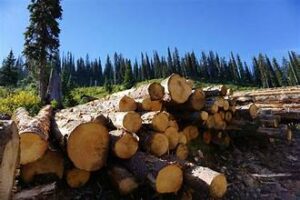
Community forestry is emerging as a powerful tool for economic and environmental transformation. This approach, which involves local communities in managing and benefiting from forest resources, offers a sustainable model that supports both ecological balance and economic development. In this article, we’ll explore the key benefits of community forestry, examine some success stories, and understand how this model is reshaping local economies.
Understanding Community Forestry
Community forestry refers to the management and use of forest resources by local communities. This model aims to empower communities to take an active role in the stewardship of their natural resources, ensuring that they receive both economic and environmental benefits. Unlike traditional top-down approaches where decisions are made by distant authorities, community forestry involves local stakeholders in decision-making processes, fostering a sense of ownership and responsibility.
Key Benefits of Community Forestry
1. Economic Growth and Job Creation
One of the most significant advantages of community forestry is its potential to stimulate local economies. By managing forest resources, communities can generate income through activities such as sustainable timber harvesting, non-timber forest product collection (e.g., fruits, nuts, and medicinal plants), and eco-tourism. This not only creates job opportunities but also helps diversify local economies, reducing reliance on subsistence agriculture or external aid.
2. Enhanced Livelihoods
Community forestry projects often focus on improving the livelihoods of local people. By involving communities in forest management, they gain access to resources that can be used for income generation and improving their standard of living. For instance, communities may engage in beekeeping, agroforestry, or craft-making, all of which provide valuable economic returns and contribute to the overall well-being of the community.
3. Environmental Sustainability
Sustainable forest management practices promoted by community forestry help protect and restore forest ecosystems. Local communities are often more invested in maintaining the health of their forests because they directly benefit from them. This leads to better forest conservation, reduced deforestation rates, and improved biodiversity. Community forestry practices can also mitigate the impacts of climate change by preserving carbon sinks and promoting reforestation efforts.
4. Strengthened Community Bonds
Community forestry encourages collective action and strengthens social cohesion. When communities work together to manage their forest resources, they build trust, enhance cooperation, and foster a sense of unity. This collective effort often extends beyond forest management, leading to improved social infrastructure and community resilience.
Success Stories of Community Forestry
1. Nepal’s Community Forest Program
Nepal’s Community Forest Program is a pioneering example of successful community forestry. Established in the 1990s, the program empowers local communities to manage over 25% of the country’s forested area. The initiative has led to increased forest cover, improved biodiversity, and significant economic benefits for local communities. The revenue generated from sustainable timber and non-timber products has been reinvested in community development projects, such as schools and health clinics.
2. Kenya’s Forest Community Projects
In Kenya, community forestry has transformed the lives of many rural communities. The Kenya Forest Service collaborates with local groups to manage forest resources sustainably. Successful projects include the establishment of community woodlots and tree nurseries, which provide income and reduce pressure on natural forests. Additionally, eco-tourism ventures, such as community-run lodges and guided nature tours, have brought economic benefits and raised awareness about forest conservation.
3. Brazil’s Amazon Fund
The Amazon Fund in Brazil supports community-based initiatives aimed at protecting the Amazon rainforest. Local communities receive financial support and technical assistance to implement sustainable forest management practices and conservation projects. The fund has contributed to reducing deforestation rates and promoting sustainable livelihoods through activities such as agroforestry and eco-tourism.
Challenges and Considerations
While community forestry offers numerous benefits, it is not without challenges. Ensuring effective governance, securing land tenure rights, and providing adequate training and resources are critical to the success of community forestry initiatives. Additionally, addressing conflicts between conservation goals and community needs requires careful planning and collaboration.
Conclusion
Community forestry is a transformative approach that holds promise for enhancing local economies and promoting environmental sustainability. By involving communities in forest management, we can achieve a balance between economic development and ecological conservation. The success stories from Nepal, Kenya, and Brazil demonstrate the potential of community forestry to create positive change. As we move forward, it is essential to address the challenges and build on the successes to ensure that community forestry continues to benefit both people and the planet.


